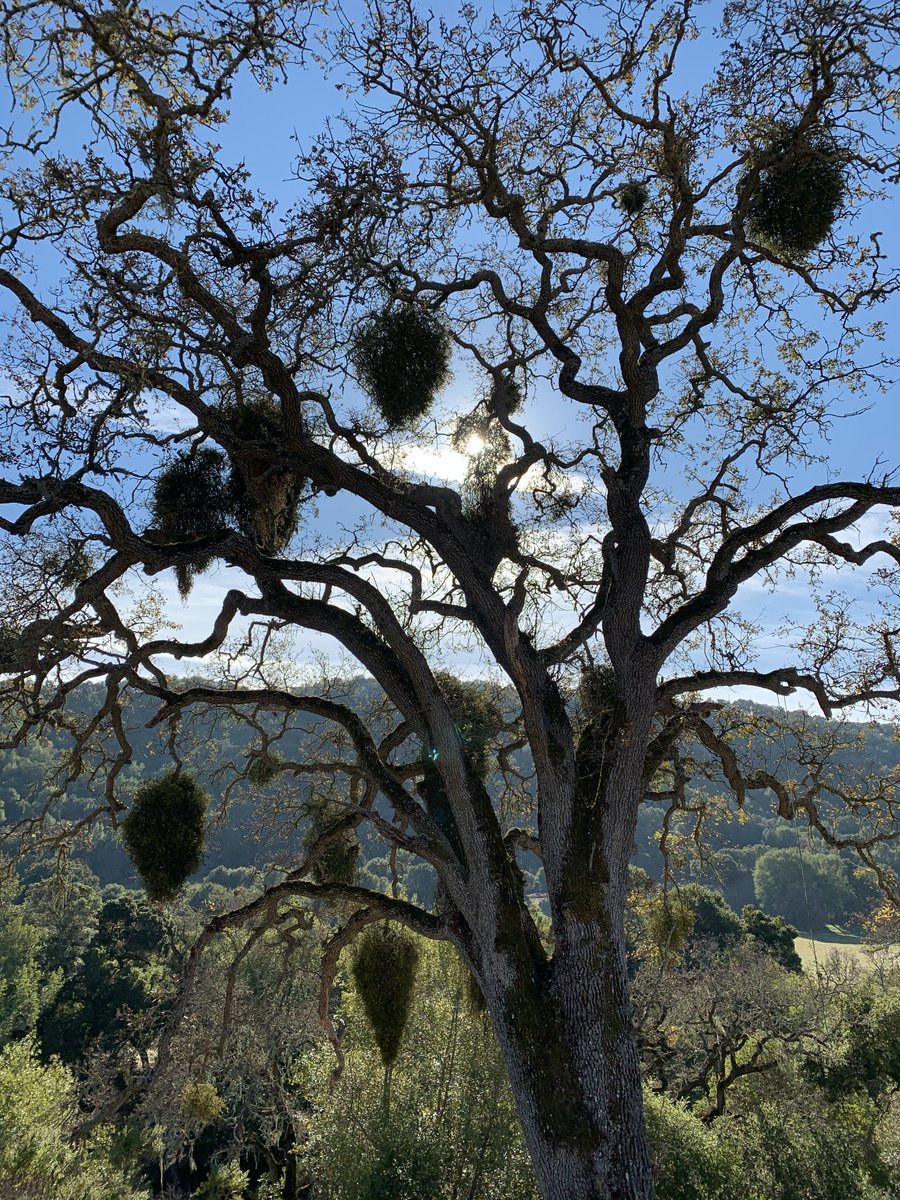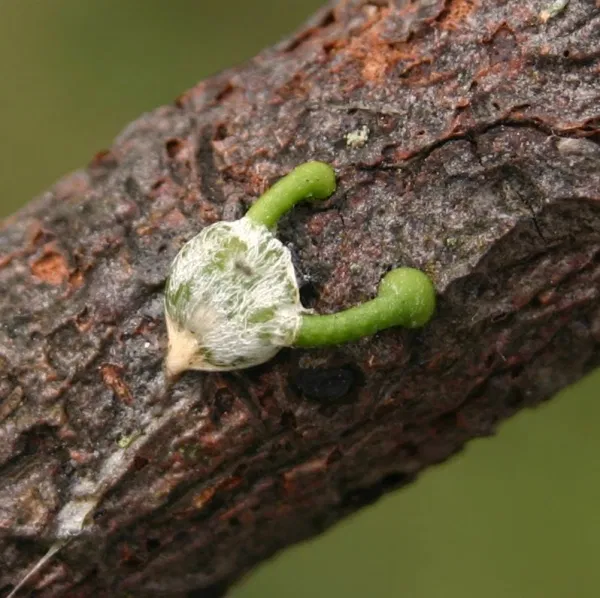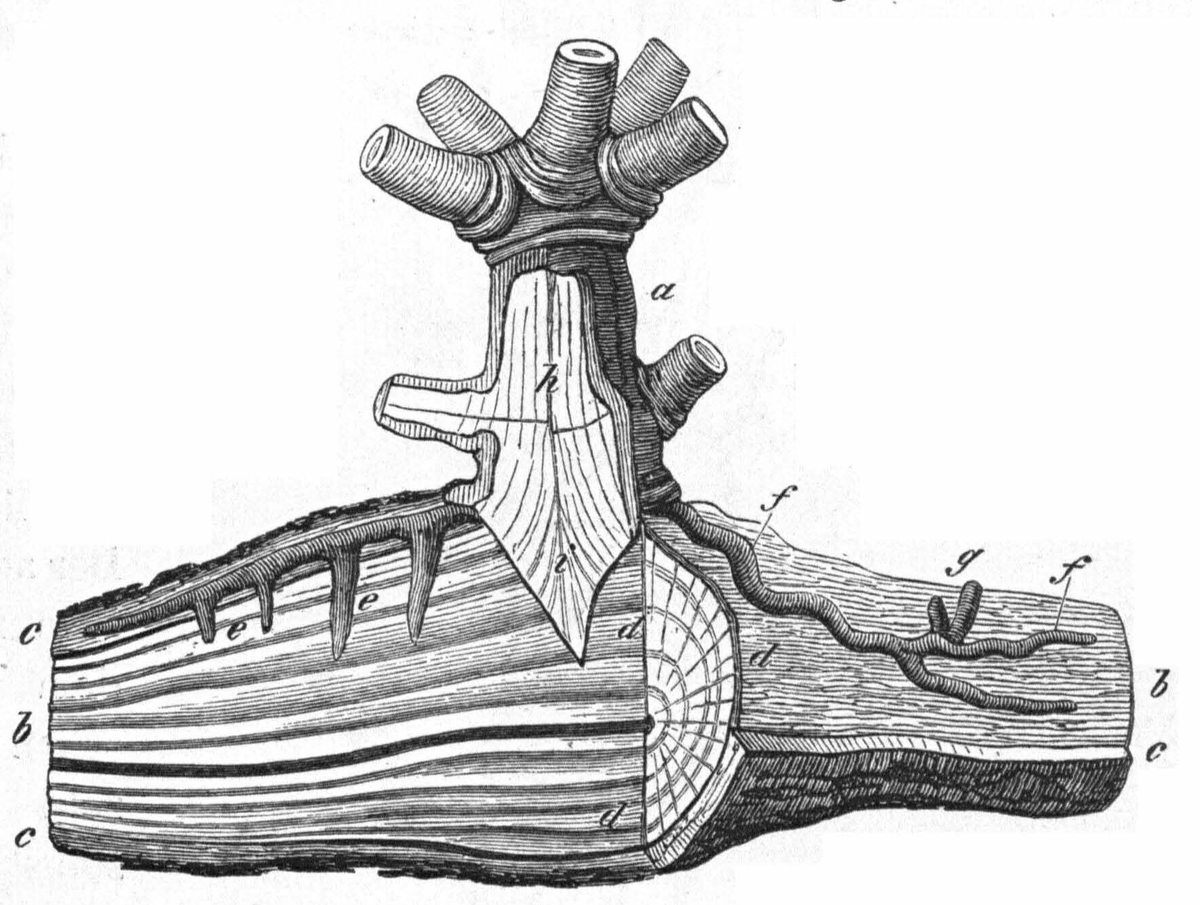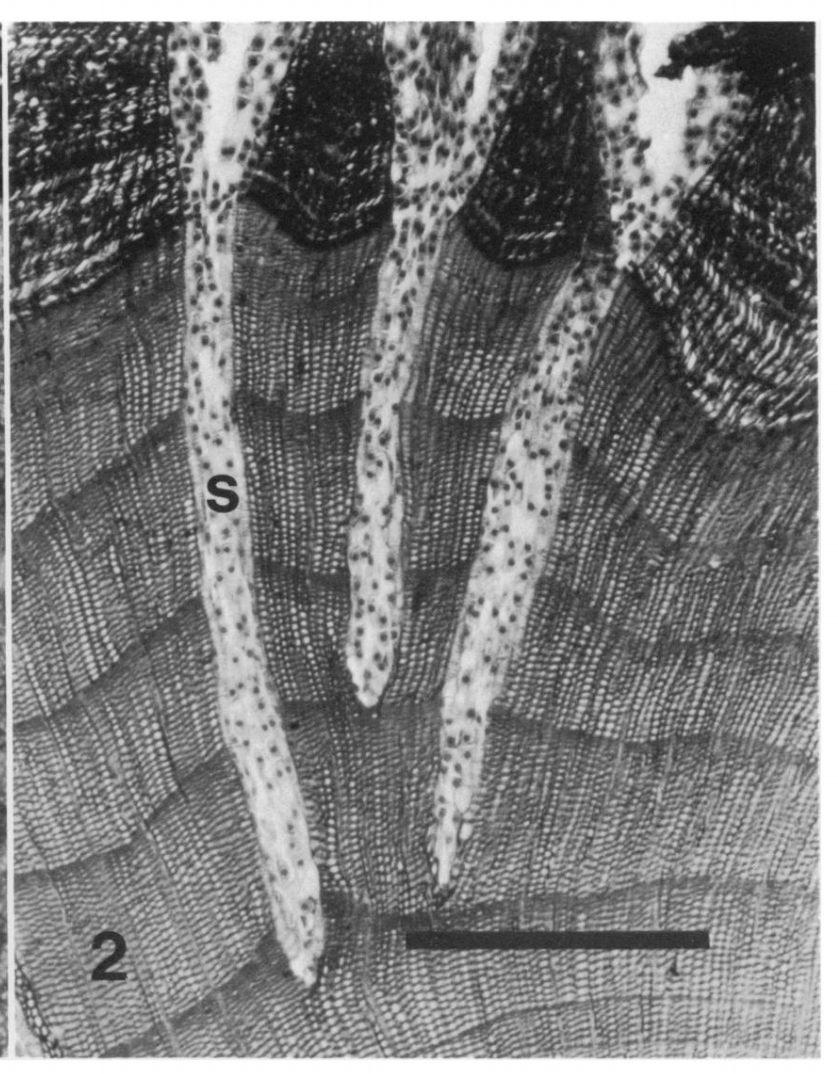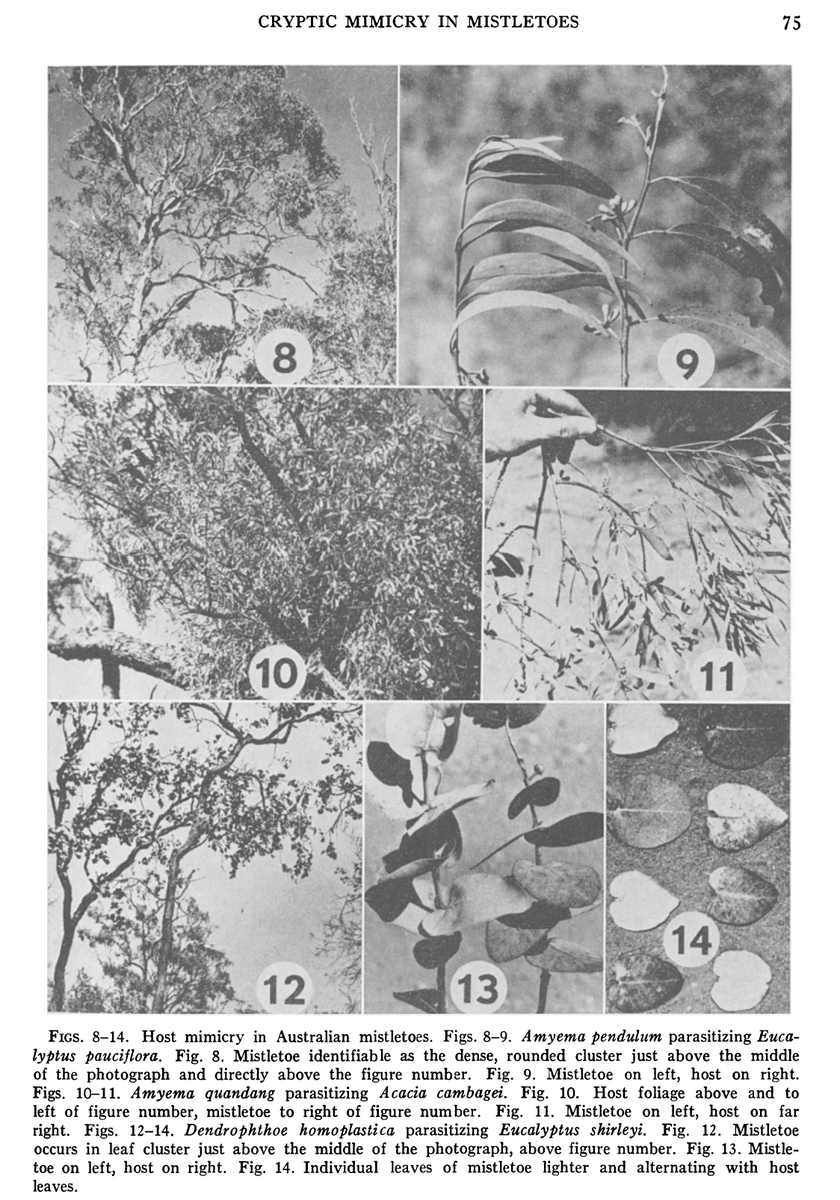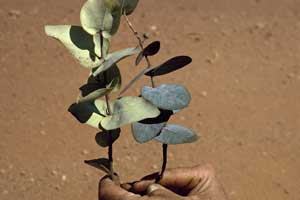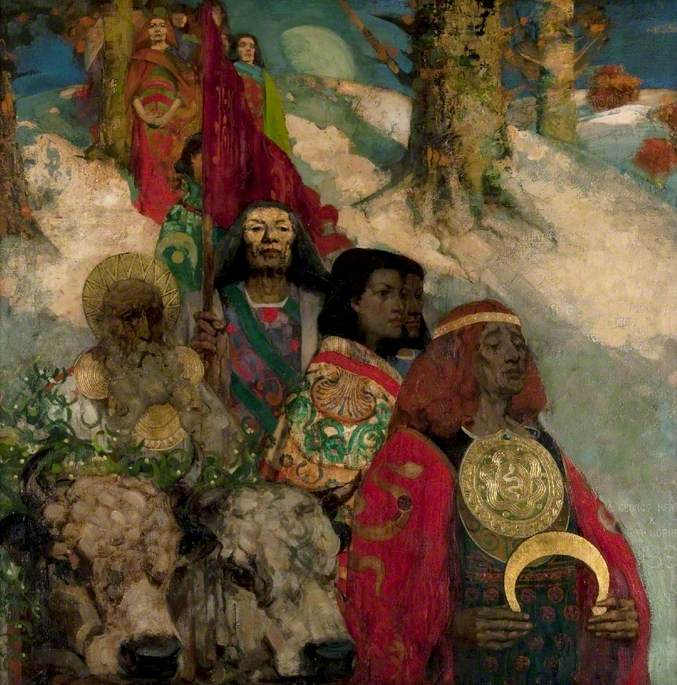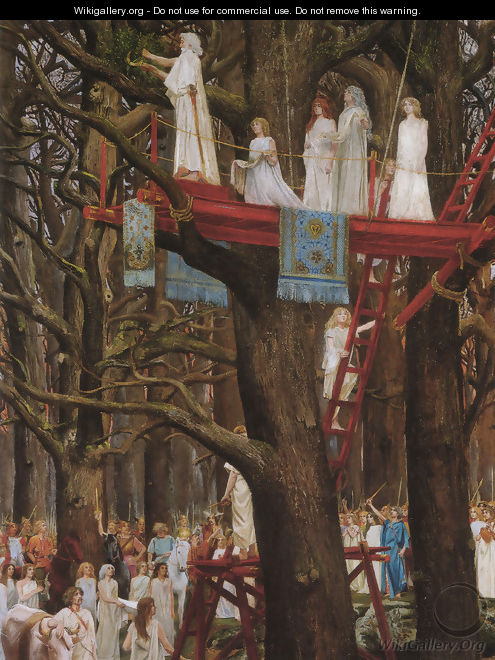I took this photo today of North American oak #mistletoe, Phoradendron villosum. Some clumps were three meters high and two across. Clearly decades old. A thread on a plant central to the #HolidaySpirit #UnderTheMistletoe...1
Phoradendron means 'thief-tree' in Greek. Why? These particular mistletoes are hemi-parasites (half-parasites) on oak trees--they obtain water and nutrients from the contents of the host xylem, which moves from roots to shoots--not the phloem, which contains most of the sugar...2
Yet, species in this genus are also able to make their own sugar (photosynthesize) although they may not be that great at it. This may help them deal with seasonal leaf flush and senescence in their hosts, seasonal droughts, etc...3
A mistletoe fruit is eaten by a bird in the Bay Area (or a marsupial in Australia or Argentina) and after it digests it, a seed lands on a tree branch (photo from https://mistletoediary.com/2014/12/20/mistletoe-seeds-dream-of-a-light-christmas/). If suitable, the mistletoe seed germinates and grows into the host tissue...4:
The structure that allows the mistletoe to sap the nutrients of the host is claled the haustorium--note the sinkers, which are root-like structures that tap into host xylem. Also see how the tree's annual growth rings grow around the haustoria (from http://mistletoe.org.uk/homewp/index.php/what-is-mistletoe/)...5:
Something that my colleague Professor Todd Dawson used to 'age' the mistletoes that infect junipers out West, called Phoradendron juniperum ( https://doi.org/10.2307/244480 ), here you can see the tree's annual growth rings as they grew around the 'sinker' labeled 'S' in this photo...6:
Dawson et al. estimated that most juniper mistletoes fell between 2-12 years old. The oak ones are a lot larger...Notably, the juniper mistletoes have lost their leaves evolutionarily, which is a whole other can of worms because mistletoes #mimic host foliage...7
Mistletoes mimic their host's foliage most dramatically in Australia. Mistletoes are sandalwoods (Santalaceae) and in Australia, hosts are commonly Eucalyptus species. This paper shows HOW incredible this mimicry is--got to caption to really get it ( http://doi.org/10.2307/2407546 )...8
Mistletoes are not closely related to their hosts, yet they look like them. Why? To avoid being eaten...if they mimic an unpalatable host leaf, they have a leg up. Here are more, unbelievable photos ( https://www.anbg.gov.au/mistletoe/mimicry.html) like this, mistletoe on left, eucalyptus on right...9:
Ok, so why is mistletoe in so many different spiritual traditions around the world? The main reason, it seems, is that mistletoes are sandalwoods that are tropical in origin and evergreen and so they stand out because in temperate/tropical dry places, their hosts often do...10.
So...the ancients in various places, including Europe and Asia, attributed special powers to them. The Druids in what is now Britain had a particular practice whereby on the winter solstice, the high Druid priest used a golden sickle to cut a mistletoe off an oak...11
and then two white bulls were used to bring the mistletoe back home...the poor bulls were then sacrificed (!)...here is a famous painting by George Henry and Edward Atkinson Hornel called 'The Druids: Bringing in the Mistletoe' ( https://artuk.org/discover/artworks/the-druids-bringing-in-the-mistletoe-84452)...12:
Here is another by Henri Paul Motte ( https://www.wikigallery.org/wiki/painting_86703/Henri-Paul-Motte/Druids-Cutting-the-Mistletoe-on-the-Sixth-Day-of-the-Moon_)...13:
It was banned in Christian churches for a while given its 'pagan' roots but got folded into winter holiday tradition in Europe and then U.S. Why people are supposed to kiss under it is what you all want to know! Various theories abound. One is that when the druids found it...14
they laid down their arms and had a truce for some days...and did a dance...and were merry. Others attribute it to a ceremony derived from the death of the Norse god Balder. I can see why people attributed such powers to these plants given that they are broadleaf evergreen...15
plants sprouting from a different plant species that invariable had lost its leaves. With the benefit of science and a lot of hindsight, we can now see that although perhaps not magical, they are no less amazing given their biology. We studied one in my lab...16
called desert mistletoe ( @kmyule @jenniferahkoop @NicMAlexandre) that is also in genus Phoradenron (called P. californicum) and is dispersed by the Phainopepla--a silky flycatcher that has 'groves' of these plants. The plant are quite host-specific...16: https://onlinelibrary.wiley.com/doi/abs/10.1111/mec.13693
Thanks for reading and enjoy the mistletoe that you might see in the field this winter (looks for big clumps of green in otherwise leafless trees if you are in North America) or that you have pinned above a door at your house! There are also a whole set of holoparasitic...17
...mistletoes (full parasites) that don't photosynthesize and steal the host's phloem (sugar), but I won't get into that yet!...18
Happy Holidays to all and note that this doesn't even begin to dig below surface of how many other cultures use mistletoes, so is quite biased. Retweet if you think @MarthaStewart should have me on her show to talk all about mistletoes! #kiddingnotkidding

 Read on Twitter
Read on Twitter